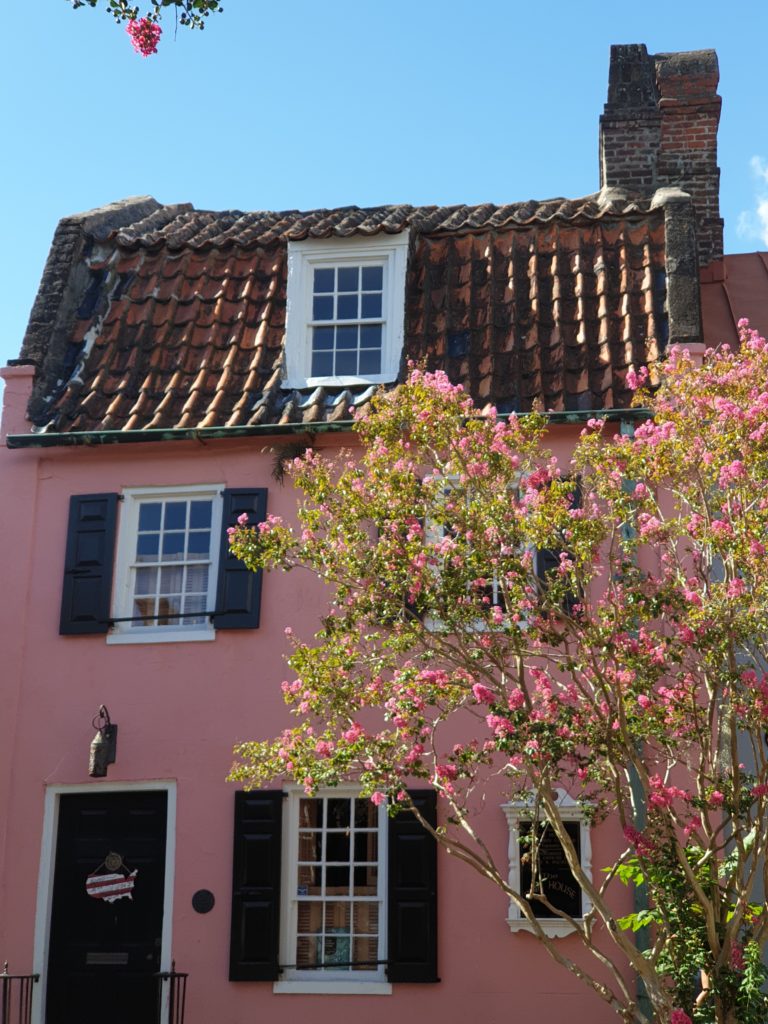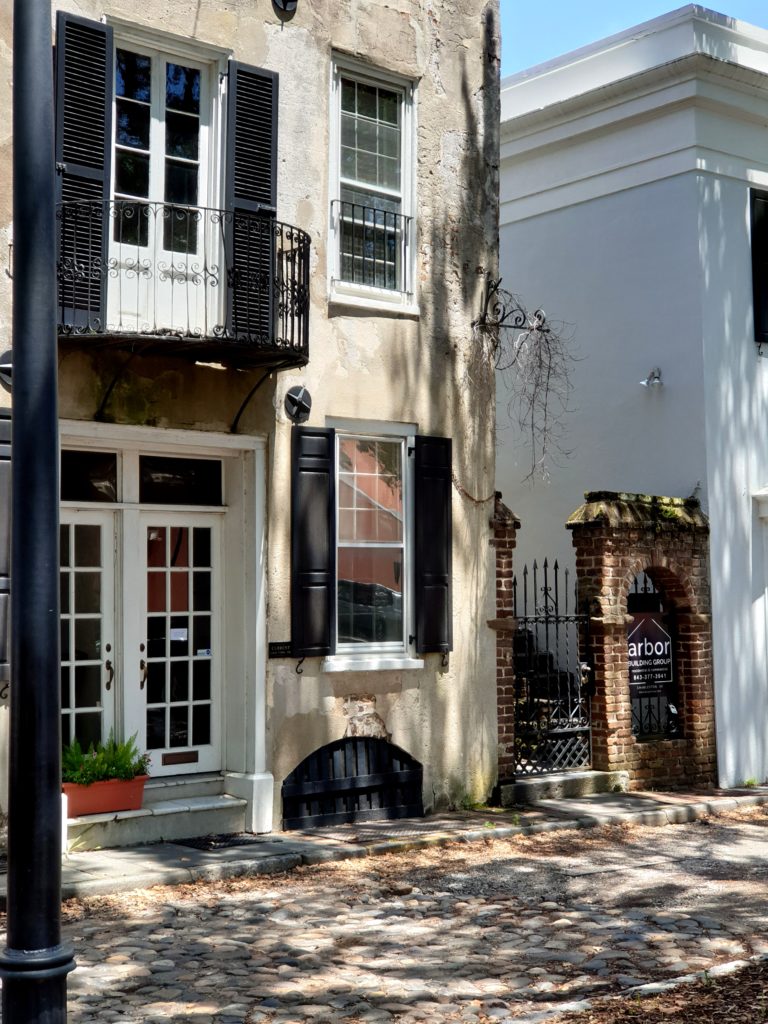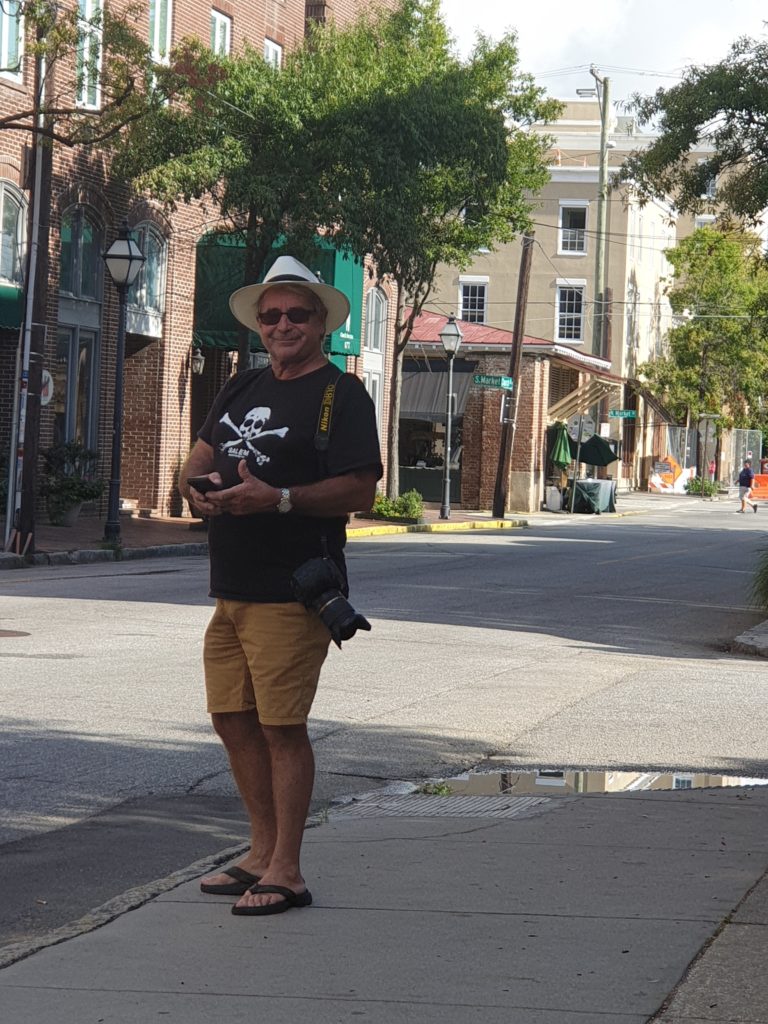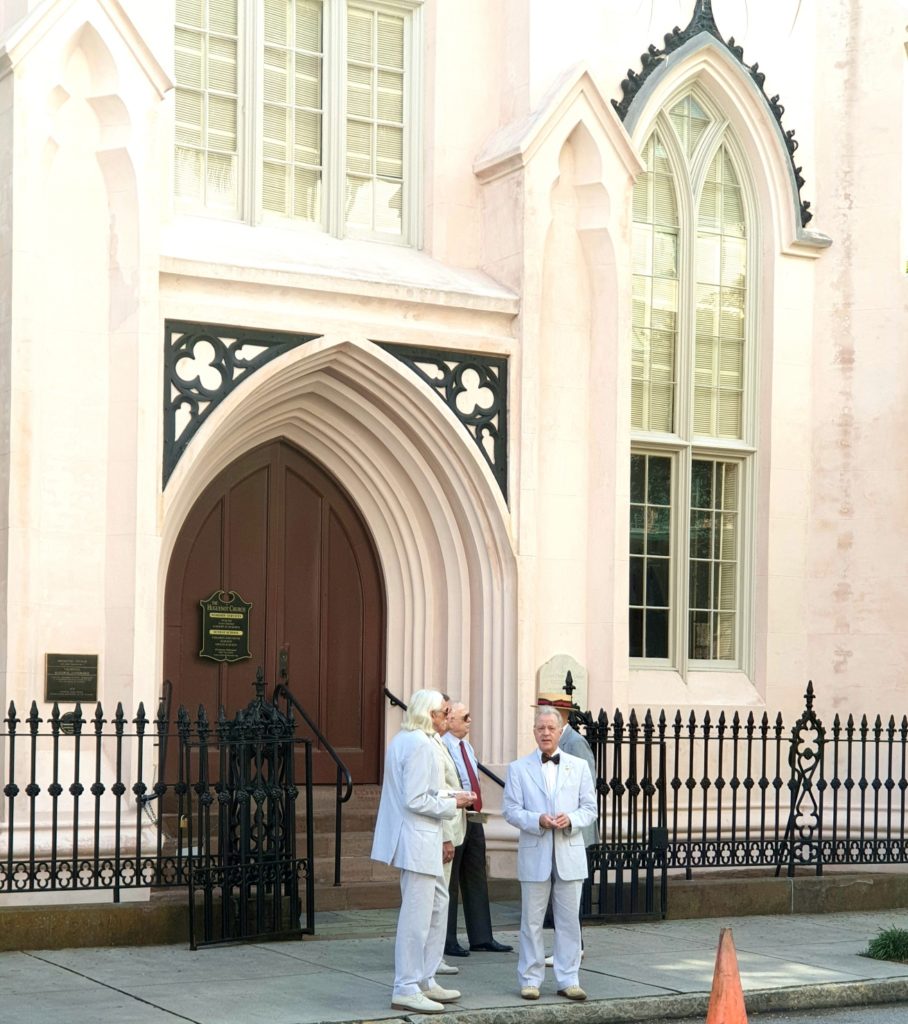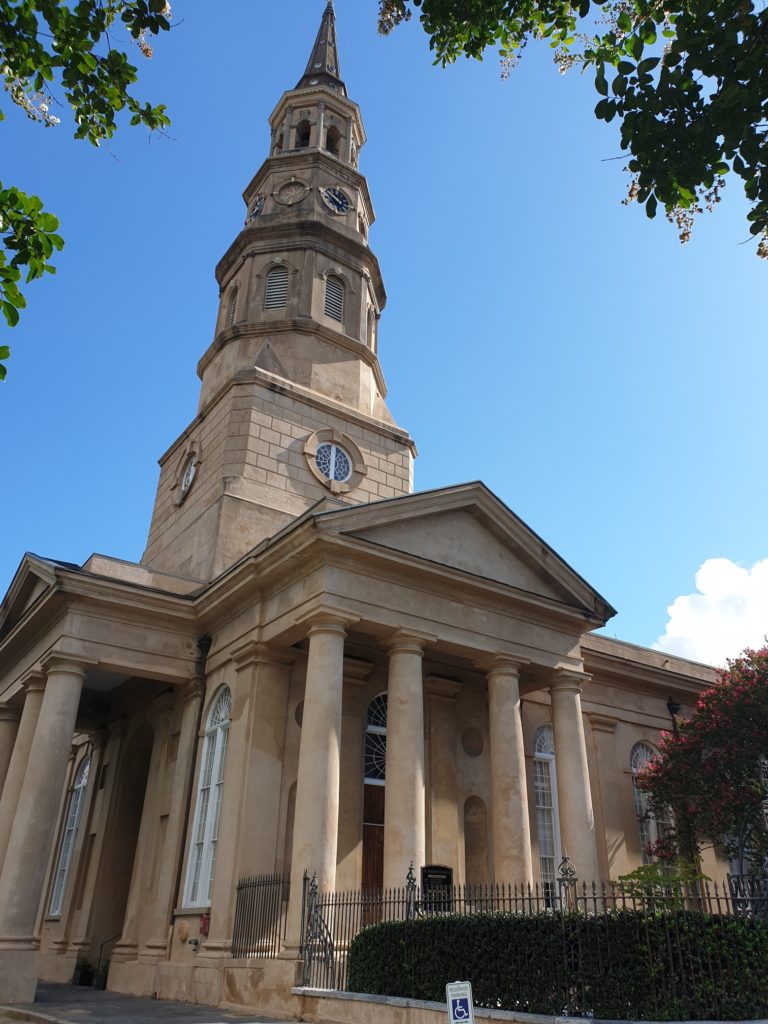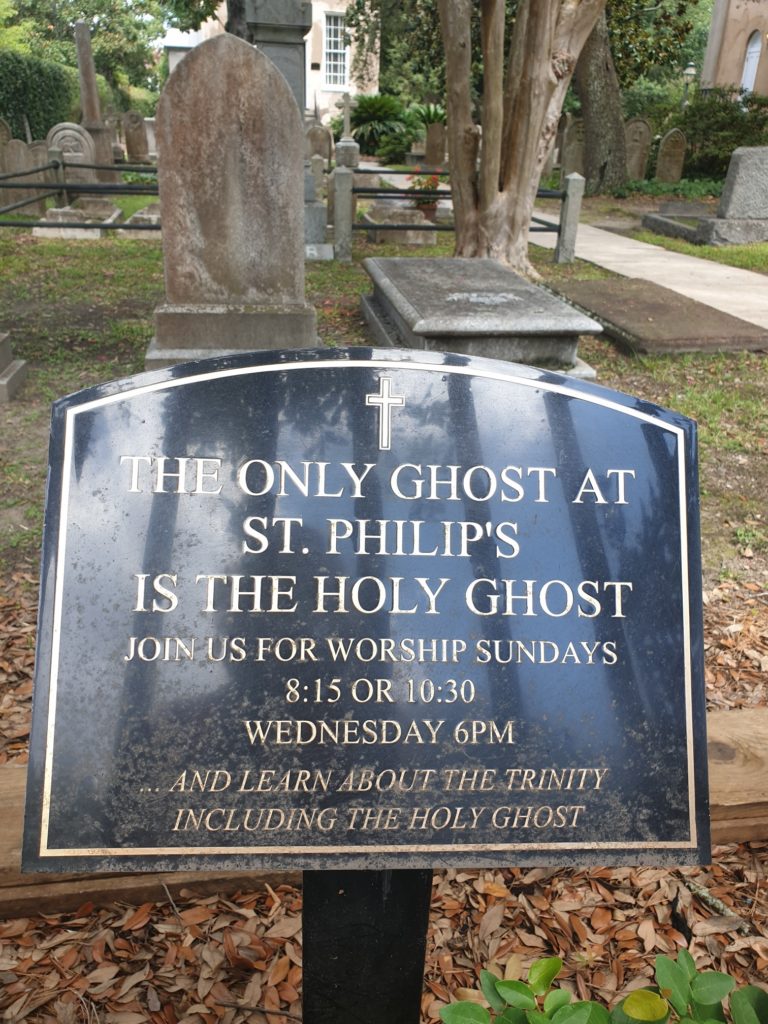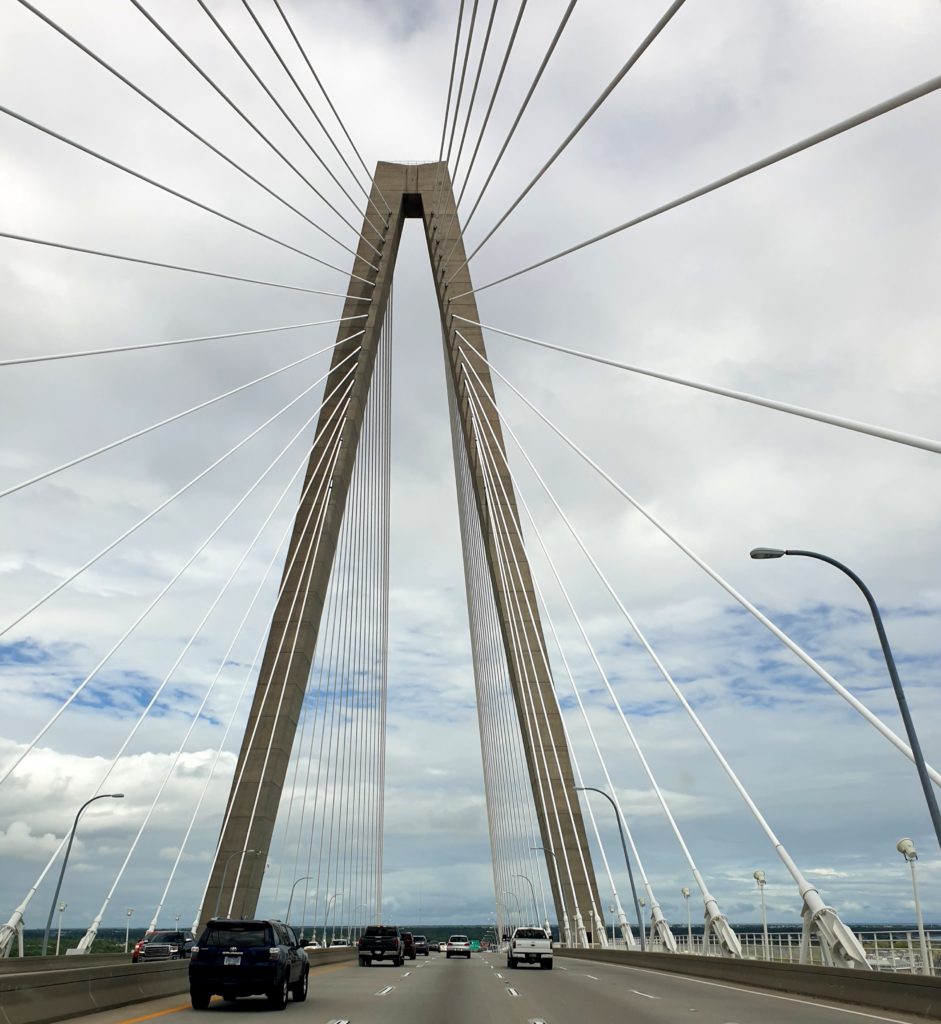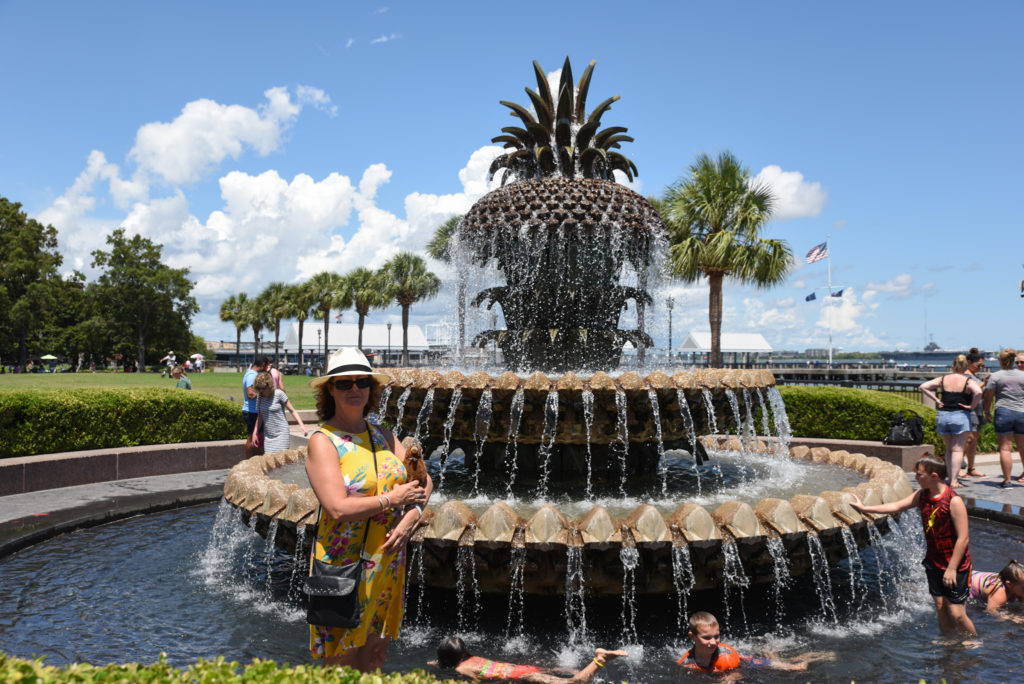
What a beautiful stunning classy place. Strolling the streets on our first afternoon I felt a little underdressed in shorts and after Charlotte not a homeless person in site.
We were up early for a walking tour. We found a company called “Free Tours By Foot”. I cant recommend them enough. Our tour guide was Scott, he held my fascination from the beginning to the end and like others we have met on our trip, he made the history that happened around this area come alive.
We learnt that Charleston was first settled back in the 1663 and was originally called Charles Town after King Charles II when he gifted the area in South Carolina to 8 of his friends. Some gift! But after the America Revolution they changed the name to Charleston. There is a little pink house still standing from this time. In fact it recently sold for over a million dollars. A real bargain for 4 rooms and no kitchen!
The settlement had built a wall around entirely round the 62 acres of the town. Charleston suffered raids from the Spanish from the south, the French from the north and Pirates from … well the ocean. Apparently the Pirate Black Beard held the town to ransom by blocking the harbour mouth for 48 days. But the Wall did not fall and he had to move on to plunder elsewhere.
Charleston, became a very wealthy town, as the harbour was a major port for the export of Indigo up till the Revolution (then England didn’t want anything from the colonies), then rice (a specific blend unique to this area call Golden Rice, this area gets 80 inches of rain annually – that explains the humidity) and then cotton. But particularly for the import and sale of Slaves to work the plantations both north and south. There were often slave auctions in the town squares, till the early anti slavery movement forced them to go indoors. In 1856 there were 40 Slave Auction Houses in a 4 block radius within the small walled settlement. An estimation of over 3/4 of a million slaves were brought to America, and close on 50% of them came through Charleston. At that time only 3 % of the white population owned 95% of the enslaved population. It is quite hard at times to get your head around it.
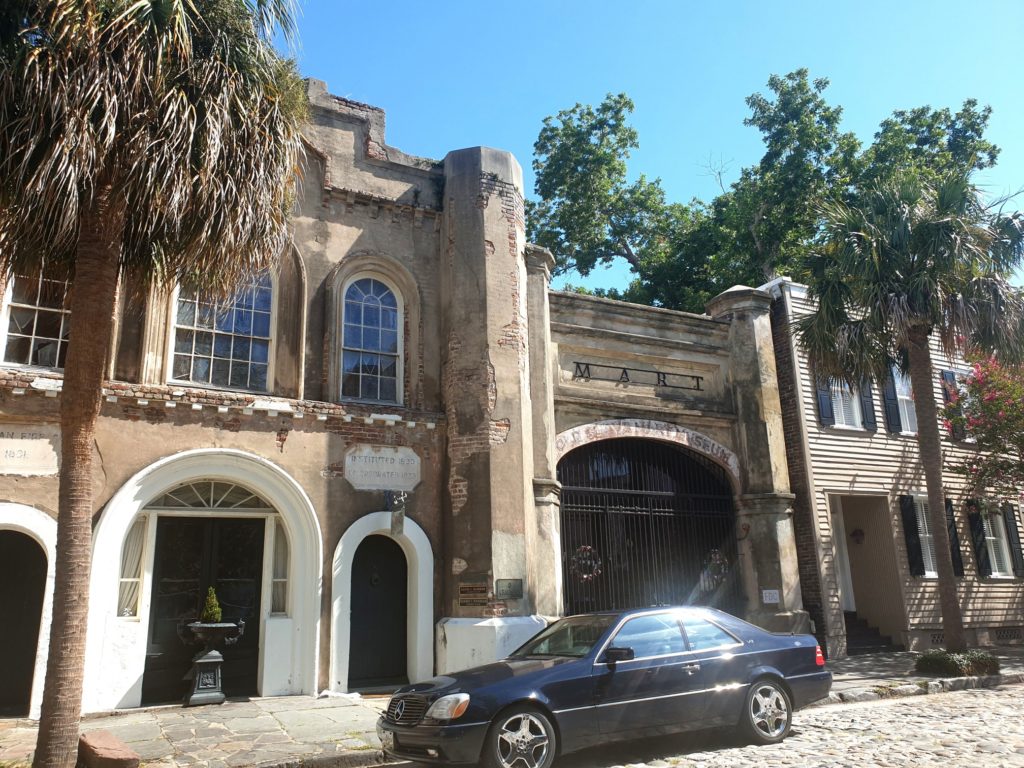
Charleston at the onset of the civil war was the 4th largest city. And was where the first battle of the Civil War was fought (at Fort Sumter in the harbour) and perhaps the only battle of the entire war that had no lives lost. Its actually quite ironic that such a bloody war was opened with a bloodless battle.
Due to the warm winters, Charleston was were the first “snowbirds” (rich northerners) started to come to escape the cold northern winters. But they also started stripping the beautiful architecture they found to take back to their northern homes until the early 1920’s. This is when the Preservation Society of Charleston was founded to retain the historic homes of this area.
One area in particular are the beautiful houses along Rainbow Row. They are dated from 1800’s but the colours are not true of the time they were built, these colours are copied from the colonial Caribbean building colours when they were being restored in the 1920’s. It didnt seem to matter, the colours just made it an enchanting street.
In the centre Charleston the sky line is only dominated by the various steeples of the churches. And there are plenty of those. No high rise buildings. No glass monstrosities. In fact Charleston has the first and now the last practicing Huguenot congregation in America.
St Phillips Church has a magnificent steeple of 200 ft. The current brick and stucco church was the 3rd built for this parish in 1836 (after the 2 previous wooden churches had burnt down) and although inside the walled city, the steeple was used as a light house from 1893 right up to 1915 to guide ships into the Charleston Harbour. The steeple of St Philips is also built of brick and is so heavy that the west side foundations of the church has sunk lower than the east. Charleston’s very own leaning tower.
In the centre of the now town is a huge market. There had been a market on the same site since 1804. The market covers 4 blocks. Must say the building it was in on the first block was air-conditioned, so was a welcome respite from the heat.
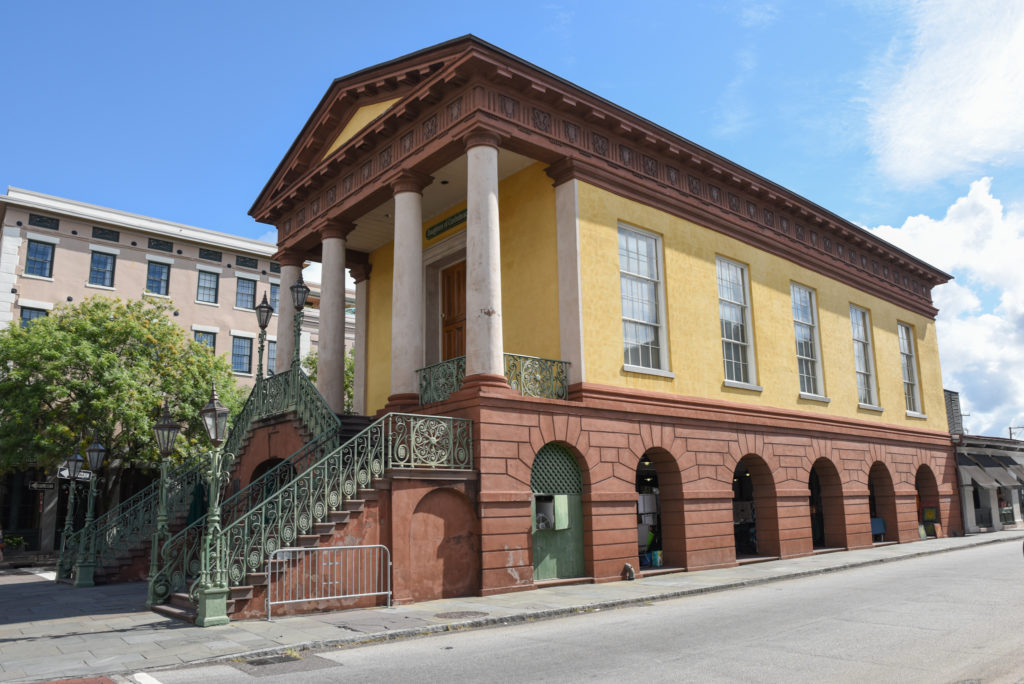
As you wander round the town and the history takes you over, you turn a corner in the in the distance you do see a modern day structure that is awe inspiring. Not another horrid glass office building but the Arthur Ravenel Jr Bridge spanning the Cooper River. This amazing bridge is the 3rd longest Cable-Stayed bridge in the Western Hemisphere. It is 4 km long. All you can say is WOW.
How can this city get it so right. Could we send our city governing body here to learn some lessons. How to retain the history and the feel while encompassing the modern. I am fascinated that amongst the shops people live. Not in high rise apartment blocks, but homes, some beside the shops or above them, retained from time gone past. Those huge malls that nowadays we think are a necessity are kept to the city out skirts. Oh and that bridge, its has 8 vehicle lanes (4 each way) and a bicycle-pedestrian path lane.
Both TOH and I have fallen under the charm of Charleston and must say that so far it is the top of our favourite places we have been to. Although we are sad to leave Charleston, we are excited to head off to Savannah next as we hear it is as beautiful Charleston as well.

